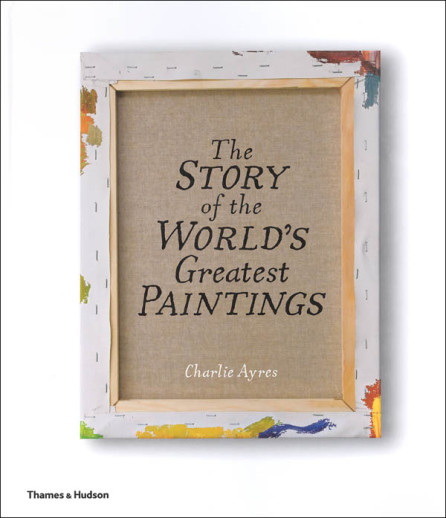We use cookies to make your experience better. To comply with the new e-Privacy directive, we need to ask for your consent to set the cookies. Learn more.
Story of the World's Greatest Paintings
Highlighting the masterpieces of 20 great painters from the 15th to 20th century, you will dig deeper into the works of both householdname artists as well as more unfamiliar artists - the mix includes van Eyck, Botticelli, Millais,
Morisot, Chardin, Uccello, and Gaugin, among others. Study a masterpiece from each artist, examining how its unique elements were created. Hone in on certain aspects and compare this work to others by the same artist. The text takes a unique approach in describing the art: it is written as though we are standing there as the artist works. The author's style is explained in a conversational, story-like form. While I found this style appealing and easily digestible, be aware that the author does take a certain level of liberty, such as fictionalizing some of
the artist's thoughts and feelings. This book also analyzes the original intended audience, how the painters bucked established artistic trends, and how audiences have responded through the years. This is a beautiful book with 134 illustrations (126 in color), including a full reproduction of each highlighted masterpiece. With each painting, the "Why Don't You?" inset suggests an activity, such as journaling, a visit to an art museum, or drawing horizon and perspective. Note: a handful of paintings and sculptures with nude subjects are selected. For each artist, you will also find a portrait and web links to view
additional artwork; a chronology is in the back. Includes a glossary and a list of art museums to visit. 10" x 11 ¾", 96 pp, hc. ~ Ruth
An introduction for young readers to some of the greatest paintings of all time.
Here are twenty world-famous artworks featured in easy-to-follow chronological order, including: Jan Van Eycks The Arnolfini Portrait, Paolo Uccellos The Battle of San Romano, Sandro Botticellis Primavera, Leonardo da Vincis Mona Lisa, Pieter Bruegel the Elders Childrens Games, Jan Vermeers The Artists Studio, John Constables The Hay Wain, Winslow Homers Breezing Up (A Fair Wind), Auguste Renoirs La Loge, Berthe Morisots Summers Day, Georges Seurats A Sunday on La Grande Jatte, Paul Czannes Mont Sainte-Victoire, and Paul Gauguins Where Do We Come From? What Are We? Where Are We Going?
All of the works are remarkable paintings with remarkable histories that have been chosen specifically to appeal to a young audience. The illustrations include a portrait or self-portrait of each artist, as well as a reproduction of their masterpiece, along with carefully selected details and other paintings by the same artist for comparison.
| Product Format: | Hardcover |
|---|---|
| Brand: | Thames & Hudson |
| Grades: | 3-AD |
| ISBN: | 9780500238806 |
| Length in Inches: | 11.75 |
| Width in Inches: | 10.125 |
| Height in Inches: | 0.625 |
| Weight in Pounds: | 2.05 |

